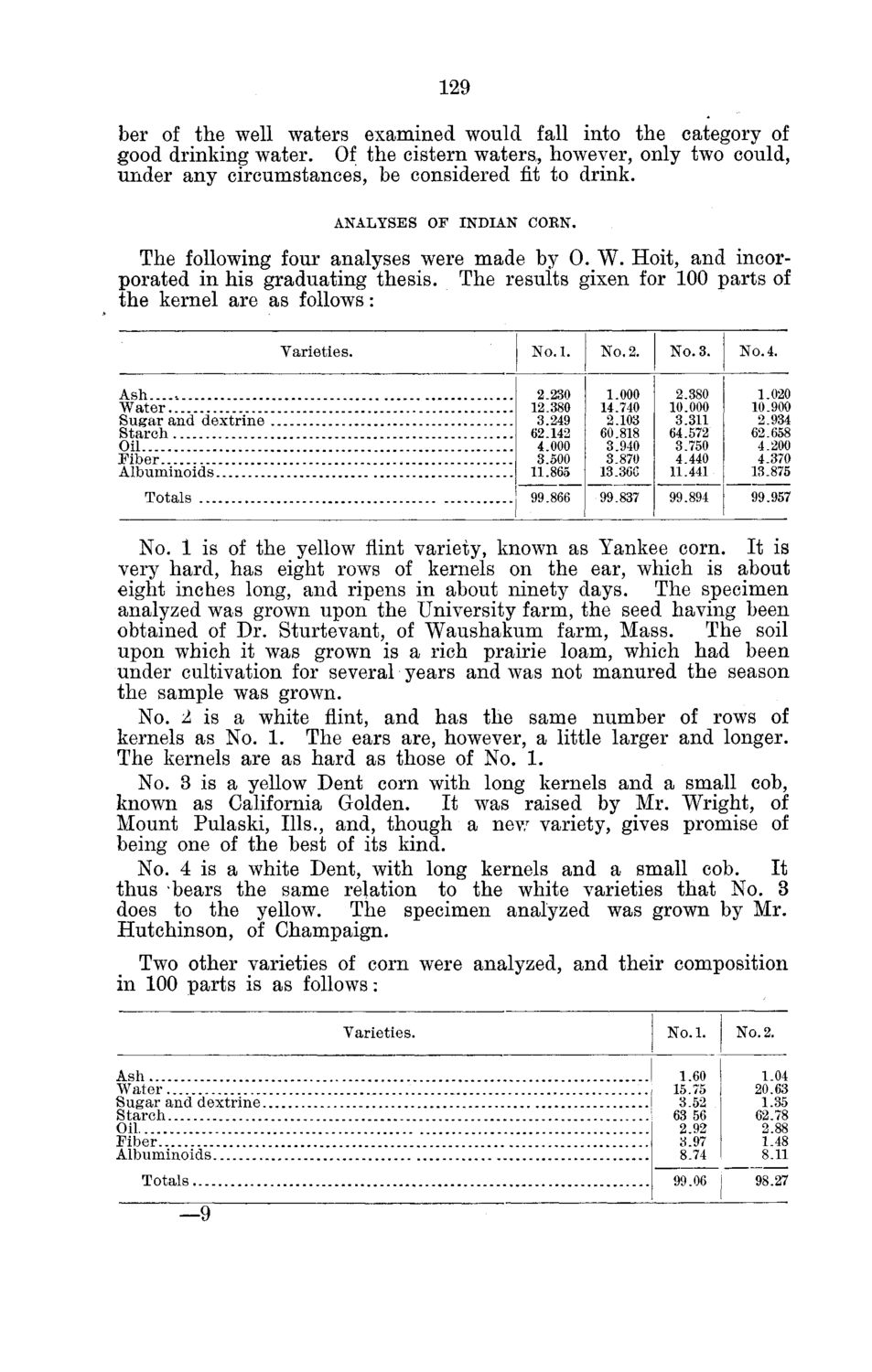| |
| |
Caption: Board of Trustees Minutes - 1880
This is a reduced-resolution page image for fast online browsing.

EXTRACTED TEXT FROM PAGE:
129 ber of the well waters examined would fall into the category of good drinking water. Of the cistern waters,, however, only two could, under any circumstances, be considered fit to drink. ANALYSES OF INDIAN COKN. The following four analyses were made by 0. W. Hoit, and incorporated in his graduating thesis. The results gixen for 100 parts of the kernel are as follows: Varieties. Ash...... Water Sugar and dextrine Starch Oil Fiber Albuminoids Totals No.l. 2.230 12.380 3.249 62.142 4.000 3.500 11.865 99.866 No. 2. 1.000 14.740 2.103 60.818 3.940 3.870 13.36C 99.837 No. 3. 2.380 10.000 3.311 64.572 3.750 4.440 11.441 99.894 No. 4. 1.020 10.900 2.934 62.658 4.200 4.370 13.875 99.957 No. 1 is of the yellow flint variety, known as Yankee corn. It is very hard, has eight rows of kernels on the ear, which is about eight inches long, and ripens in about ninety days. The specimen analyzed was grown upon the University farm, the seed having been obtained of Dr. Sturtevant, of Waushakum farm, Mass. The soil upon which it was grown is a rich prairie loam, which had been under cultivation for several years and was not manured the season the sample was grown. No. 'I is a white flint, and has the same number of rows of kernels as No. 1. The ears are, however, a little larger and longer. The kernels are as hard as those of No. 1. No. 3 is a yellow Dent corn with long kernels and a small cob, known as California Golden. It was raised by Mr. Wright, of Mount Pulaski, Ills., and, though a new variety, gives promise of being one of the best of its kind. No. 4 is a white Dent, with long kernels and a small cob. It thus bears the same relation to the white varieties that No. 3 does to the yellow. The specimen analyzed was grown by Mr. Hutchinson, of Champaign. Two other varieties of corn were analyzed, and their composition in 100 parts is as follows: Varieties. Ash Water Sugar and dextrine Starch Oil Fiber Albuminoids Totals No.l. 1.60 15.75 3.52 63 56 2.92 3.97 8.74 99.06 No. 2. 1.04 20.63 1.35 62.78 2.88 1.48 8.11 98.27 —9
| |